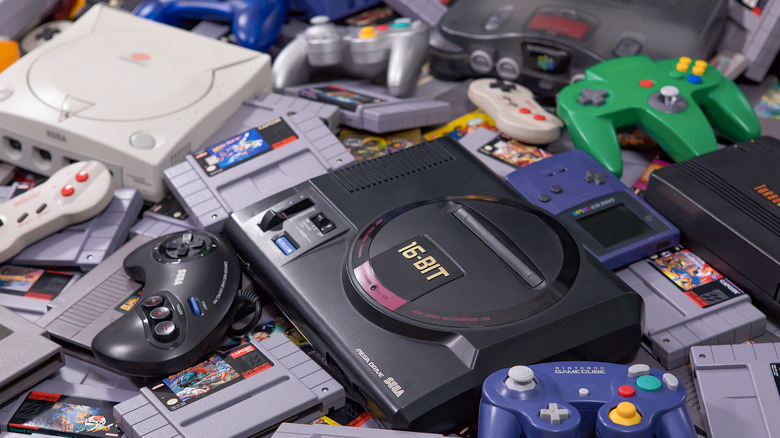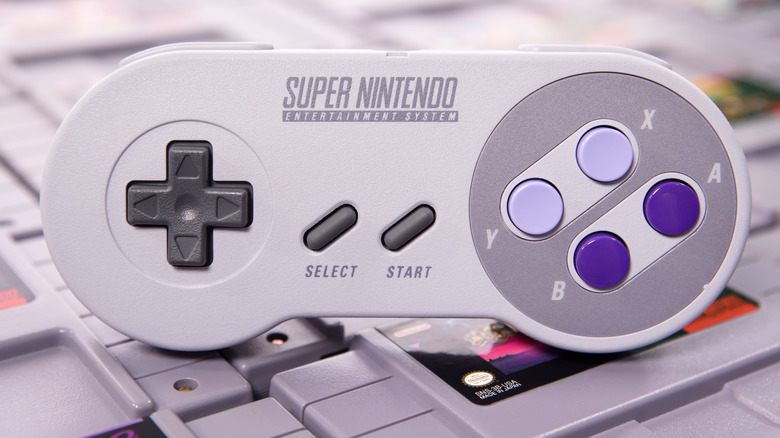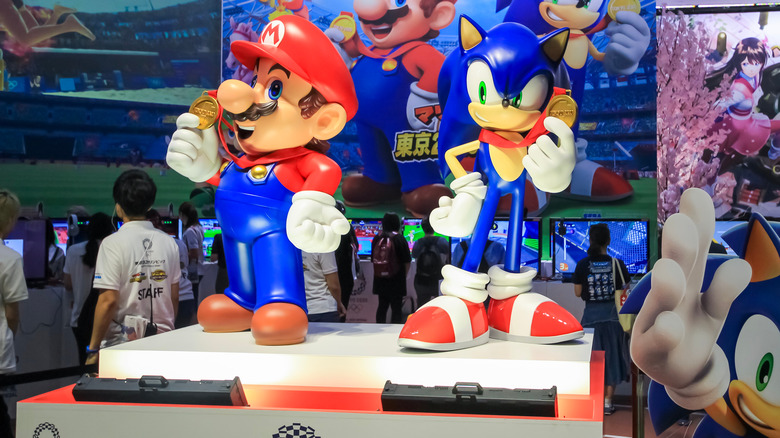The Truth About The Nintendo Vs. Sega Feud
Some of the greatest feuds in history feature each side represented with a distinct symbol or mascot. The War of the Roses saw the House of York pitted against the House of Lancaster, represented by white and red roses, respectively. In American politics, the two dominant parties use an elephant and a donkey as their mascots. While in the world of video games, the factions in the decades-long feud between Sega and Nintendo have their own mascots: a hedgehog for Sega and an Italian plumber for Nintendo.
The two video game titans first battled for the best home console in the early 1990s, according to Cinema Blend. It was a market that Nintendo had been fairly dominant in throughout the 1980s with the original NES, or Nintendo Entertainment System. That console was released for the Japanese market in 1983 before hitting the U.S. Market two years later, and went on to sell nearly 62 million units, per IGN. Meanwhile, Sega's Master System, which made its debut the same year as the U.S. launch of the NES, would only sell 20 million units by comparison.
With the next generation of consoles on the horizon, Sega needed to offer up a contender to whatever Nintendo planned to release as their NES follow-up.
Sega and Nintendo headline the early '90s console wars
Sega got the jump on Nintendo in the second round, launching their next console — the Sega Genesis — in Japan in 1988, as IGN notes. This put the Genesis in direct competition with the NES, which was on its way out. The Genesis performed well, especially in the Americas and Europe — where it was called the Sega Mega Drive. From a production standpoint, the games released for the Genesis demolished anything available on the NES. The Genesis' 16-bit capabilities offered a stark contrast to the 8-bit graphics offered by the NES, per Logic Simplified.
Of course, Nintendo had a contender waiting in the wings, and in 1990 the Super Famicon made its Japanese debut. If that name doesn't ring a bell, it's because the rest of the world knew it as the Super Nintendo Entertainment System, or SNES (via IGN). This was the era in which the rivalry was at its most contentious. According to Venture Beat, Sega had no qualms about directly attacking Nintendo in their advertisements for the Genesis.
This time around the sales figures would be much closer. Offering popular titles like those in the Sonic the Hedgehog series, the Genesis is estimated to have sold 29 million units (per IGN); a massive increase over the Master System. But it wouldn't be enough to top Nintendo, whose SNES would exceed 49 million units thanks to classic games like "Super Mario World" and "Donkey Kong Country."
Nintendo claims victory in the console war
During the Genesis era, Sonic the Hedgehog made his debut giving the company a mascot to contend with Nintendo's Mario, but it wouldn't be enough to help Sega in the following battles of the console war. Sega's next two consoles, 1994's Sega Saturn and 1998's Sega Dreamcast, would only combine to sell around half of the nearly 33 million units that Nintendo's 1996 release of the N64 managed to sell (via IGN).
The Dreamcast would mark the final home console for Sega. There would be a degree of thawing between the two companies and their iconic mascots would even show up in the same games such as Nintendo's "Mario & Sonic at the Olympic Games" series, as Nintendo.com illustrates.
Meanwhile, Nintendo continued making home consoles with varying degrees of success. The company has had major success through the 21st century like the Nintendo Wii and the Nintendo Switch, while also seeing mediocre sales from the Nintendo Gamecube, and abysmal figures from 2012's Wii U, the company's worst-selling system, home or portable, as IGN notes.


